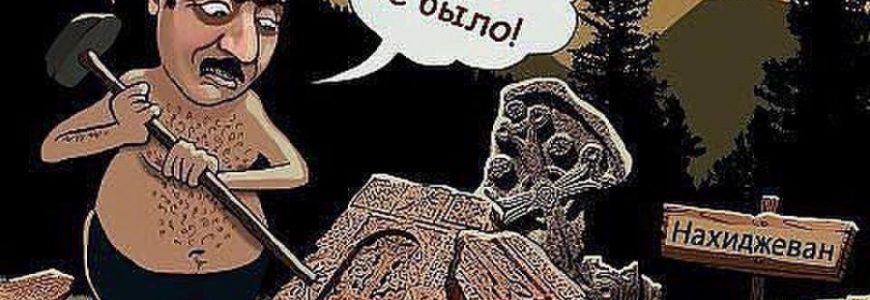A groundbreaking forensic report tracks Azerbaijan’s recent destruction of 89 medieval churches, 5,840 intricate cross-stones, and 22,000 tombstones.
In April 2011, when a US Ambassador traveled to Azerbaijan, on the southwestern edge of the former USSR, he was denied access to the riverside borderland that separates this South Caucasus nation from Iran. But it was not a foreign foe that halted the visit. Instead, his Azerbaijani hosts insisted that the envoy’s planned investigation inside the Azerbaijani exclave of Nakhichevan (officially, Naxçıvan Autonomous Republic) could not proceed because it was motivated by fake news. The ambassador had intended to probe the reported destruction of thousands of historical Medieval Christian Armenian artworks and objects at the necropolis of Djulfa in Nakhichevan. This cemetery is recorded to have once boasted the world’s largest collection of khachkars — distinctive Armenian cross-stones. However, according to Azerbaijani officials this reported destruction was a farce, that the site had not been disturbed, because it never existed in the first place. Despite ample testimony to the contrary, Azerbaijan claims that Nakhichevan was never Armenian.
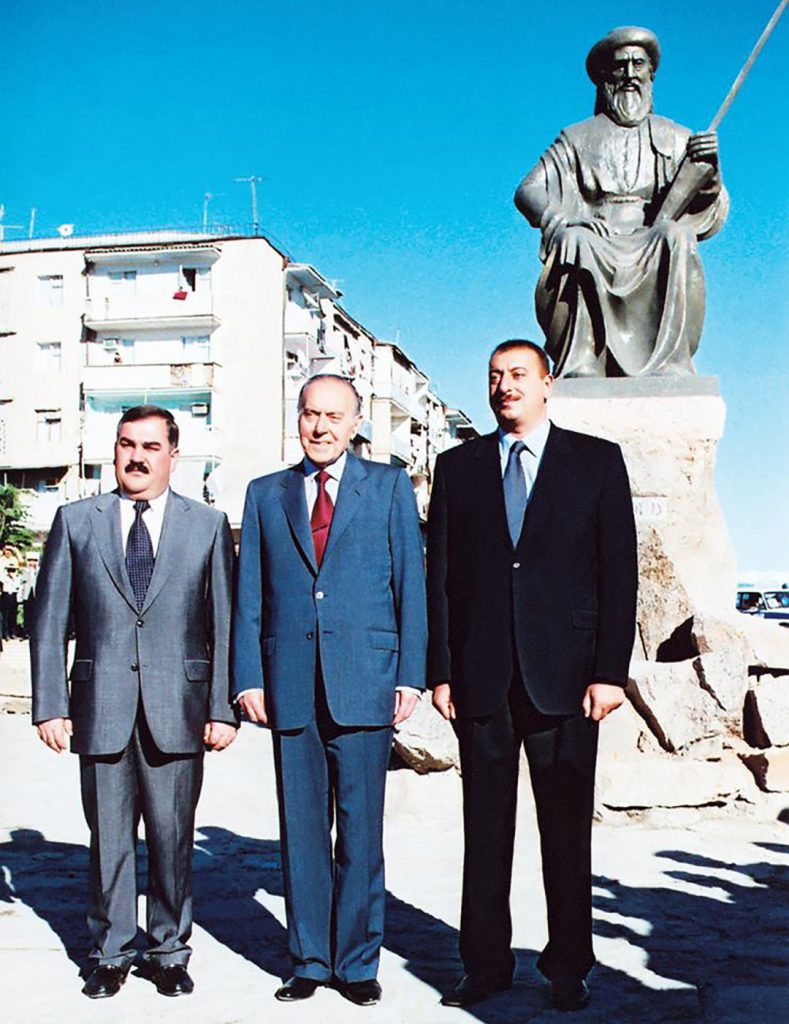
From left: Vasif Talibov, Heydar Aliyev, and Ilham Aliyev at the 1999 unveiling of a Nakhichevani statue to Dede Korkut, the mythological author of medieval Turkic tales. The statue was erected under the auspices of Heydar Aliyev’s April 20, 1997 decree to promote the “ancient and rich culture”-filled Book of Dede Korkut. The targeted destruction of Nakhichevan’s Armenian past reportedly started shortly after the decree’s signing. (courtesy of Azerbaijan state media)
Incompatible narratives of historical rights and wrongs have long bedeviled the unresolved Armenian-Azerbaijani conflict. Following the Russian Empire’s WWI-era collapse, Armenia and Azerbaijan emerged as short-lived independent states. Since centuries of imperial warfare over the strategic Armenian Highland had diversified the region’s ethnic makeup, newly-independent Armenia and Azerbaijan confronted overlapping territorial claims. Soon after the Bolsheviks took power in the area, they formalized two disputed regions — Nagorno-Karabakh and Nakhichevan — as autonomies within Soviet Azerbaijan.While Nagorno-Karabakh preserved a majority Armenian population, Nakhichevan’s longstanding Armenian communities dwindled over the twentieth century. In 1988, Nagorno-Karabakh sought unification with Soviet Armenia. Leaving Azerbaijan was necessary, Nagorno-Karabakh’s majority-Armenian population claimed, to preserve the region’s indigenous Christian past and to avoid the fate of Nakhichevan’s vanished Armenians. Amid Soviet leader Mikhail Gorbachev’s glasnost and perestroika, Nagorno-Karabakh became a war zone.
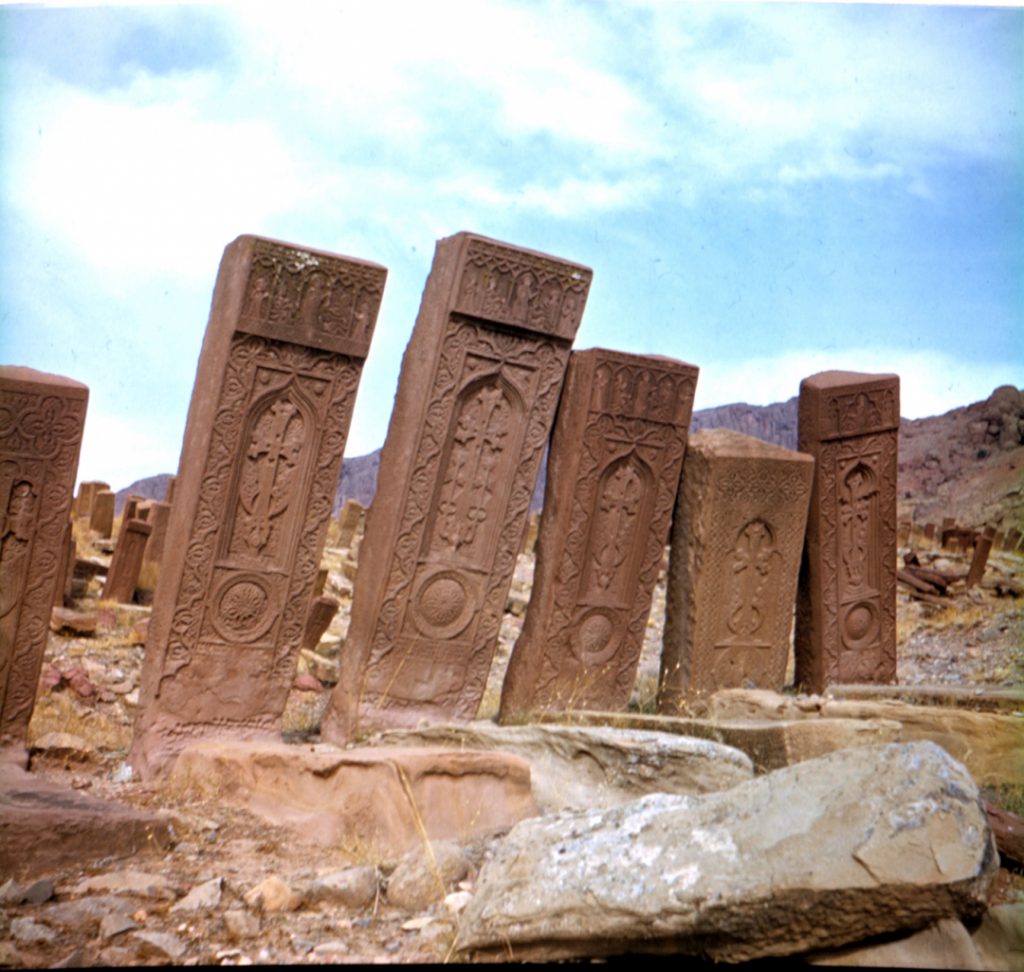
Some of Djulfa’s thousands of khachkars before their destruction, the majority of which were erected in the 16th century (© Argam Ayvazyan archives, 1970-1981)
Since the 1994 ceasefire among newly-independent Armenia, Azerbaijan, and Nagorno-Karabakh, mutual accusations of vandalism and revisionism have been rampant. Azerbaijan’s president proteststhat “all of our mosques in occupied Azerbaijani lands have been destroyed.” A visitor to Armenia-backed Nagorno-Karabakh (also called Artsakh in Armenian) would observe otherwise: there are mosques, albeit nonoperational, including one in the devastated “buffer zone” ghost town Agdam.
Yet a tourist in Nakhichevan, which was not a war zone, would encounter neither Armenian heritage sites nor public acknowledgment of the region’s far-reaching Armenian roots, including the medieval global trade networks launched by Djulfa’s innovative merchants. These merchants’ legacies, documented in Sebouh Aslanian’s From the Indian Ocean to the Mediterranean, include the legendary treasures of the “Adventure Prize” ship pirated in 1698 by celebrated outlaw Captain Kidd. In addition, according to Ina McCabe’s Orientalism in Early Modern France, many of Europe’s first cafés were founded by these Djulfa (Julfan) merchants in the seventeenth century — contributing to a culture that, as Adam Gopnik writes in The New Yorker’s last issue of 2018, “helped lay the foundation for the liberal Enlightenment.” Save for appropriated Armenian folklore linking the region to the Biblical Noah, whose ark was said to have landed on nearby Mount Ararat, Nakhichevan’s Armenian past has all but been erased.
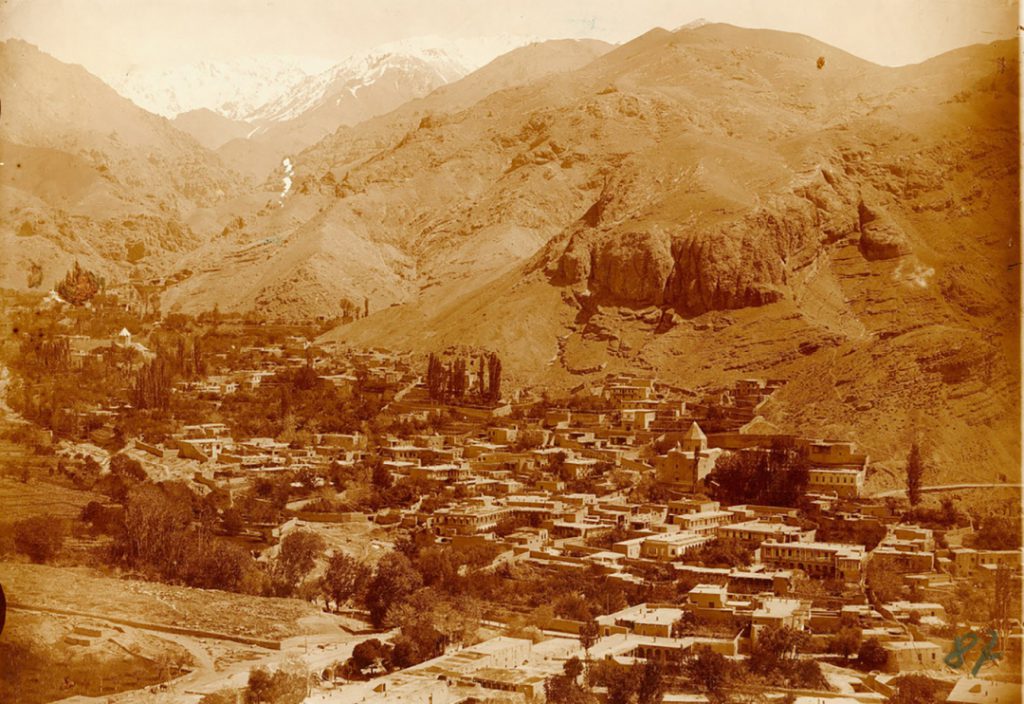
Photographic Memories
Unlike the self-publicized cultural destruction of ISIS, independent Azerbaijan’s covert campaign to re-engineer Nakhichevan’s historical landscape between 1997 and 2006 is little known outside the region. But one man, Armenia-based researcher Argam Ayvazyan, anticipated the systematic destruction decades before.
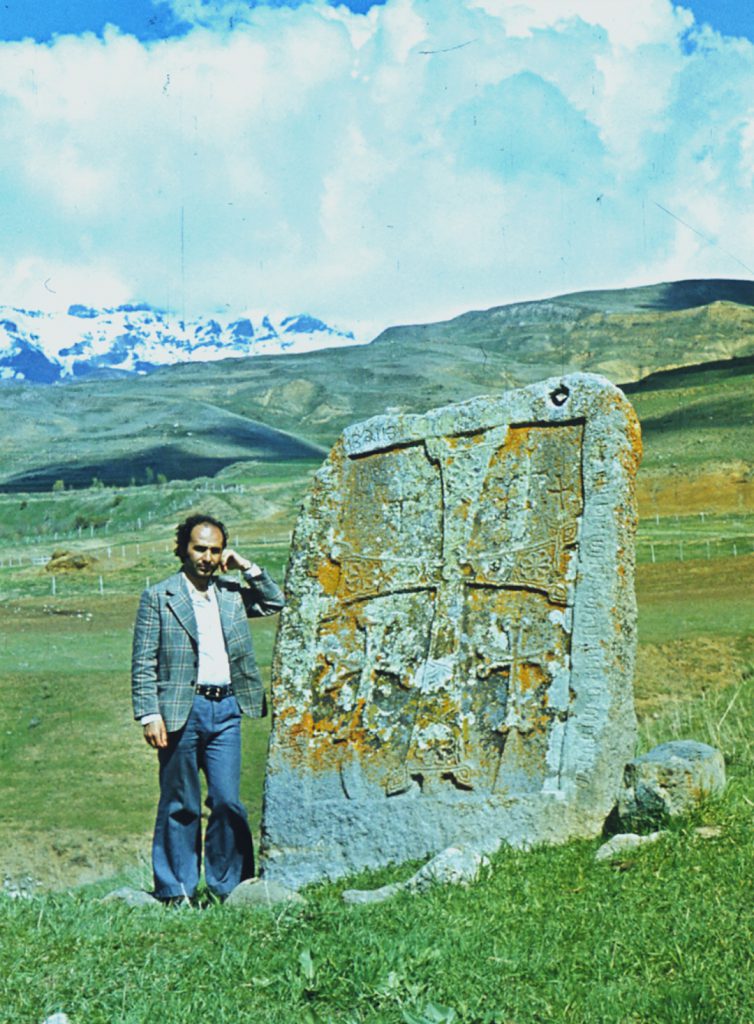
Ayvazyan feared that Nakhichevan’s Armenian material heritage was destined to disappear, like its indigenous Armenians already had. The region’s Armenian population shrunk following the 1921 treaties of Kars and Moscow, in which Turkish negotiators secured the disputed territory as an exclave under the administration of Soviet Azerbaijan. Ayvazyan was barely 17 when he started photographing the cultural heritage of his native Nakhichevan. From 1964 to 1987, he collected enough documentation to ultimately publish 200 articles and over 40 books. His photographic missions were self-financed, undercover, dangerous, and supported by his closest companion: “My wife, a teacher, was my number one pillar,” recalls Ayvazyan, “she never once complained about my prolonged absences, financial hardships, or being our children’s primary caretaker.” By the time the Berlin Wall fell, Ayvazyan had documented 89 Armenian churches, 5,840 ornate khachkars, and 22,000 horizontal tombstones, among other Armenian monuments. His affection for Nakhichevan’s artifacts was not confined to Christian sites: Ayvazyan also surveyed the region’s seven Islamic mausoleums and 27 mosques.
Treading carefully while researching contentious sites is a skill Ayvazyan learned early in his work. In 1965, after being taken to a police station for photographing a church near his birthplace, Ayvazyan received a warning from a visiting KGB chief, who treated the teenage offender to tea. In a recent interview with the authors, Ayvazyan recalled that Comrade Heydar Aliyev told him in Russian, “Never again do such things, there are no Armenian-Shmarmenian things here!” Four years later, Comrade Aliyev would become Soviet Azerbaijan’s leader and then, in 1993, president of independent Azerbaijan. “Who knew,” Ayvazyan tells Hyperallergic, “that the man who told me not to photograph churches would 30 years later launch their annihilation.” Ayvazyan became increasingly cautious. For example, when it came to surveying the interior of Nakhichevan’s preeminent cathedral in the town of Agulis in September 1972, he asked an elderly local matriarch, Marus, to escort him to a potentially hostile encounter. As the last Armenian resident of a nearby village, she knew how to speak softly with the Azerbaijani community of Agulis. There, Marus convinced locals to unlock the sealed Saint Thomas cathedral, which tradition states was founded as a chapel by Bartholomew the Apostle. Marus insisted that Ayvazyan was suffering from an illness that, he believed, could only be eased by solitary time spent inside the cathedral.
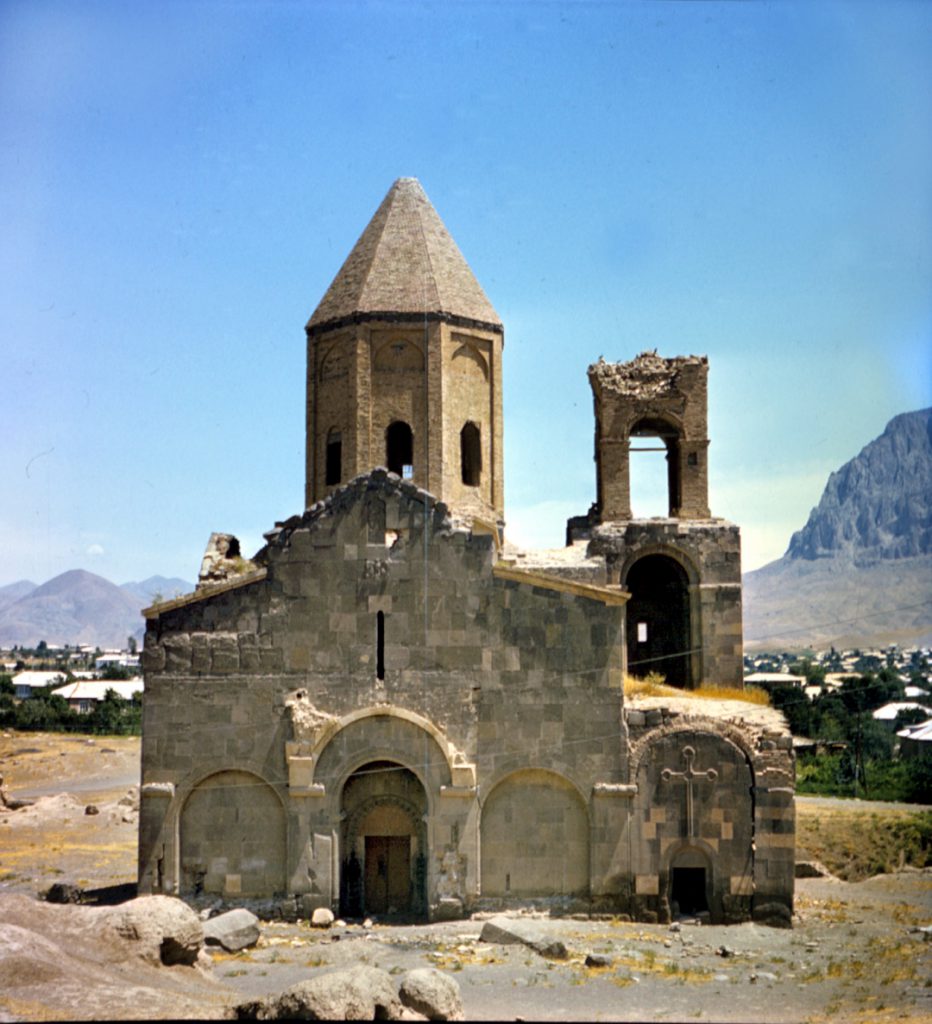
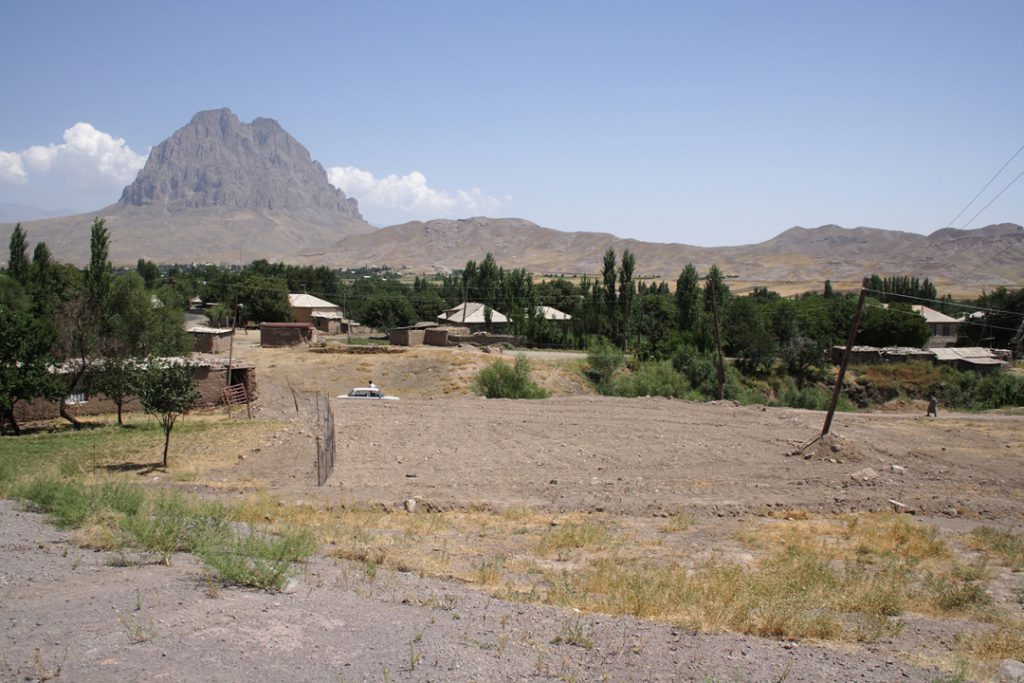
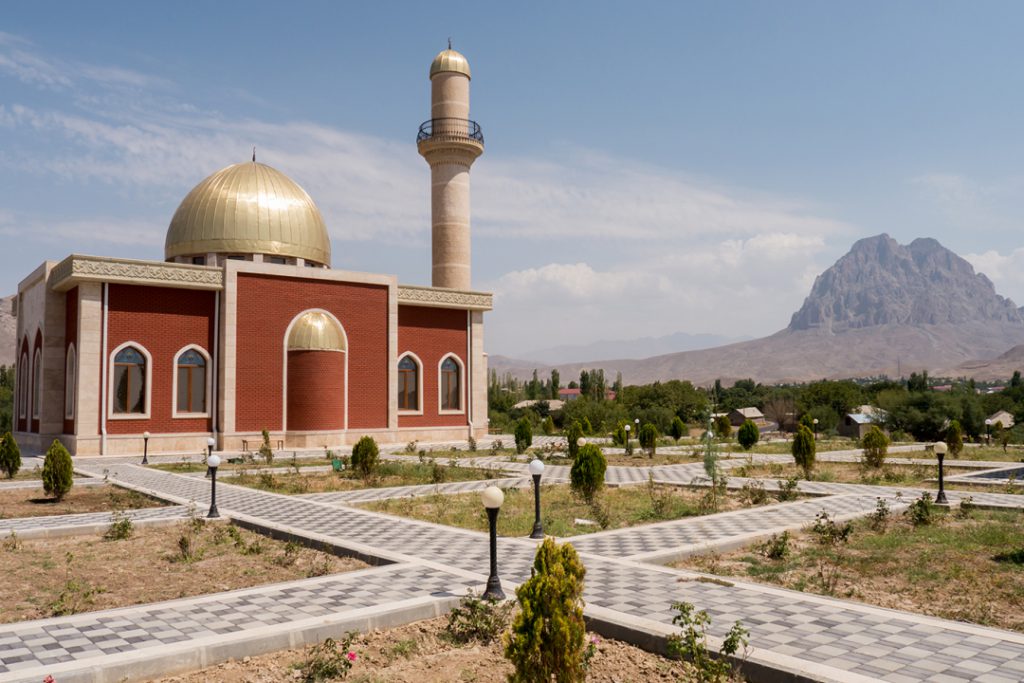
Post-Communist Manifesto
In August 2005 the region’s authorities detained another visiting scholar. Scottish researcher Steven Sim had traveled to post-Soviet Nakhichevan to assess the condition of the Armenian churches photographed earlier by Ayvazyan. Instead of medieval churches, Sim found vacant plots with no vegetation. His police interrogators had a quick response as to why there was nothing for Sim to study: “Armenians came here and took photographs … then went back to their country and inserted into them photographs of churches in Armenia … There were no Armenians ever living here — so how could there have been churches here?!,” he was told. At the end of the interrogation, Sim was given until midnight to exit Nakhichevan, leaving with photographs of empty lots. But at least some of the toppled headstones of Djulfa, which he had seen from his window during a train ride, were still there. Because of its prominent location on an international border, Djulfa — spelled varyingly and originating from the Armenian “Jugha” — had survived.
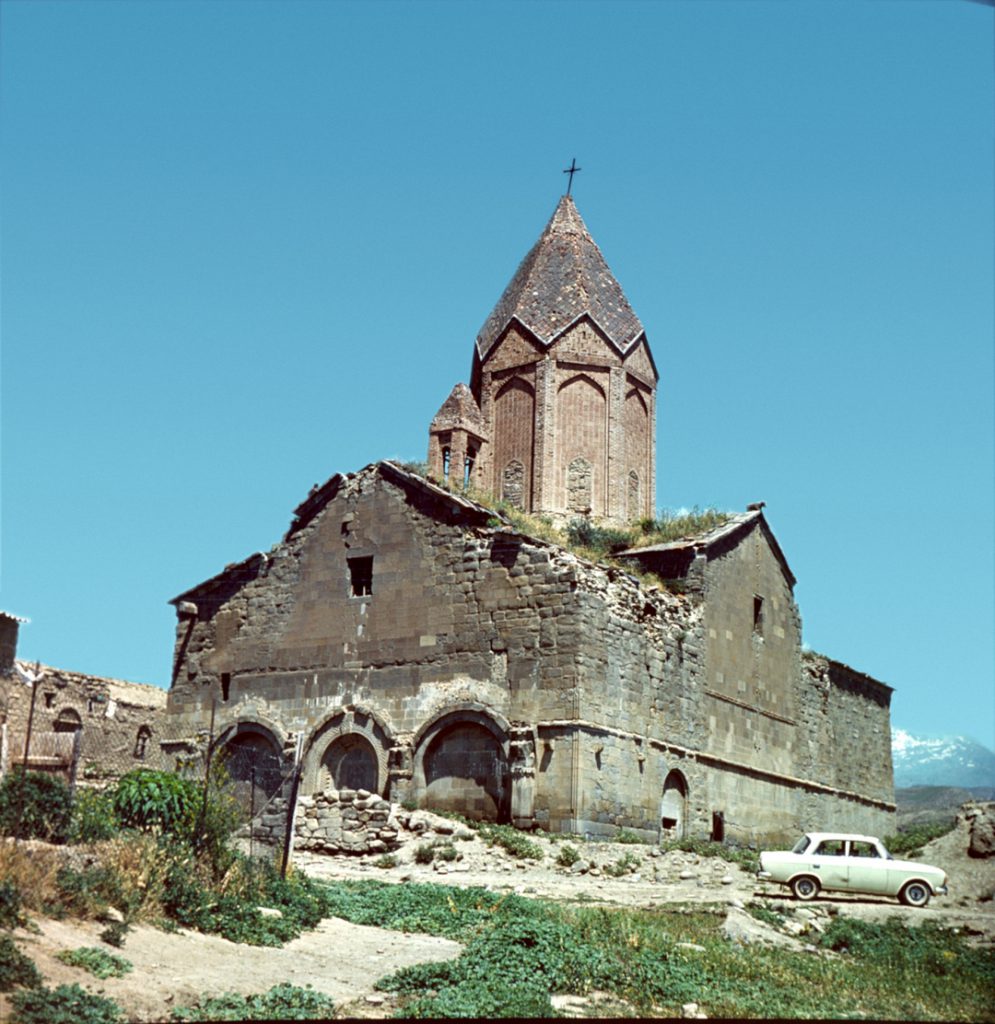
Surb Hakob (Saint Jacob), founded in the 12th century, the largest church of Shorot (© Argam Ayvazyan archives, 1970-1981)
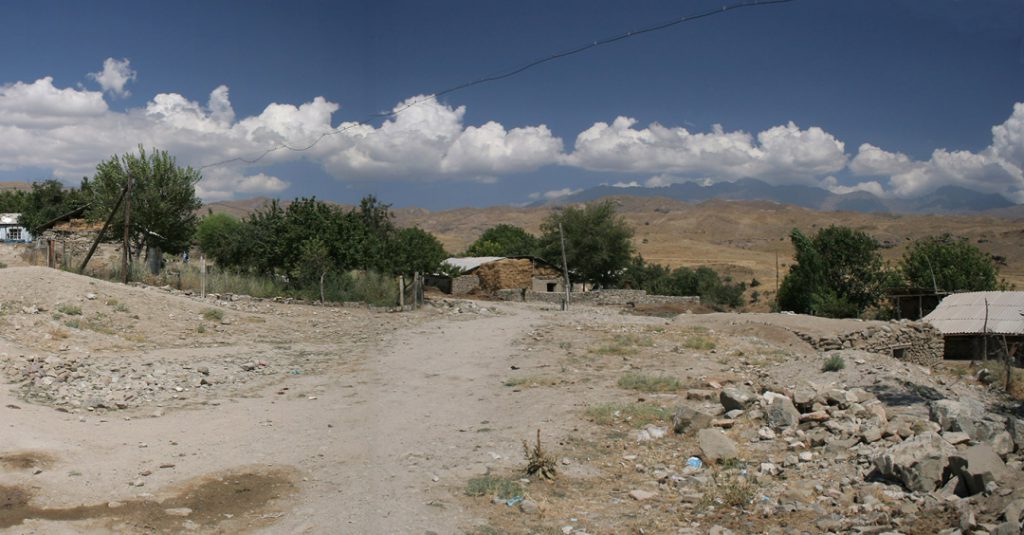
Four months later, in December 2005, an Iranian border patrol alerted the Prelate of Northern Iran’s Armenian Church that the vast Djulfa cemetery, visible across the border in Azerbaijan, was under military attack. Bishop Nshan Topouzian and his driver rushed to video tape over 100 Azerbaijani soldiers, armed with sledgehammers, dump trucks, and cranes, destroying the cemetery’s remaining 2,000 khachkars; over 1,000 had already been purged in 1998 and 2002.
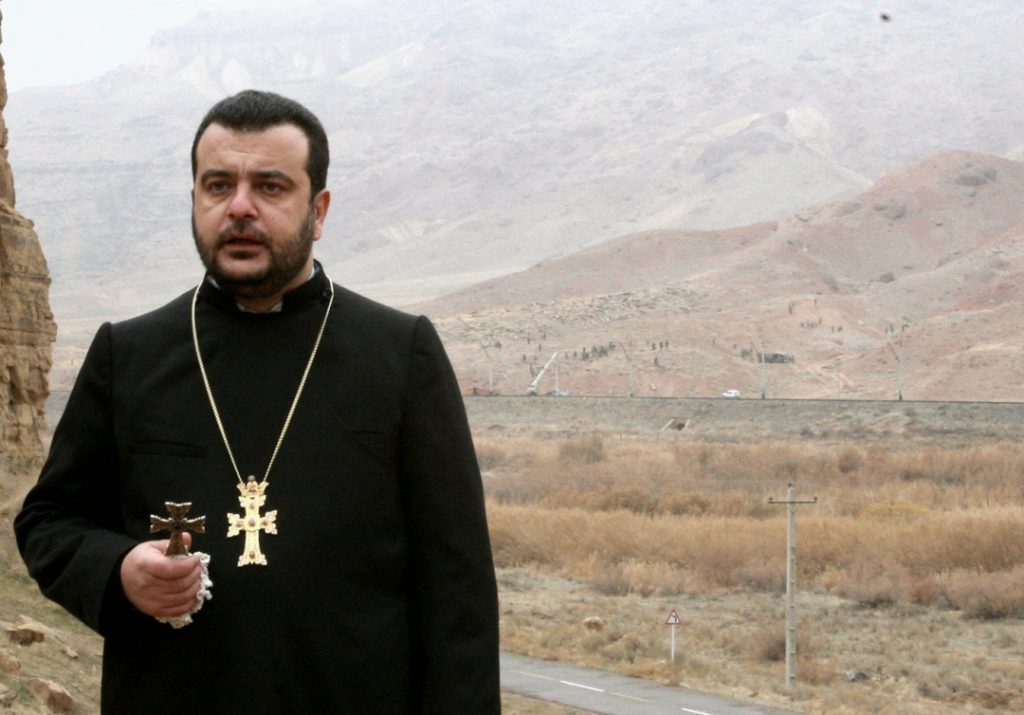
The helpless bishop officiated a tearful memorial service for the disturbed dead as the heart-wrenching scenes and screeching sounds of the obliteration continued across the border. Photographs from 2006 taken from the Iranian side of the border showed that a military rifle range had been erected where the cemetery used to be, presumably by Azerbaijan’s armed forces, to rationalize the existence of the freshly flattened soil. Likely due to three factors — its noticeable position on an international border, reputation as the world’s largest collection of khachkars, and previously voiced Armenian concerns for its preservation — Djulfa was the last major Armenian site in Nakhichevan to be destroyed. Its 2005–2006 demolition was the “grand finale” of Azerbaijan’s eradication of Nakhichevan’s Armenian past.
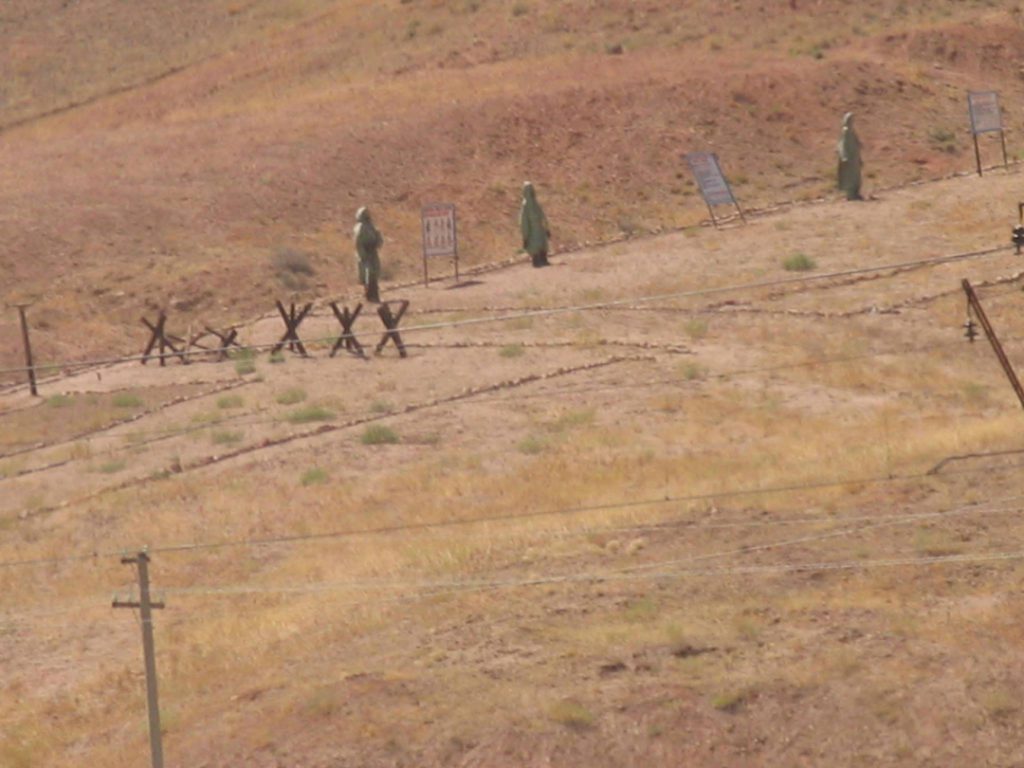
The site of the medieval Djulfa cemetery – photographed in July 2006 from the Iranian border – was temporarily converted to a rifle range by Azerbaijani authorities to rationalize the freshly-flattened earth following the final phase of the cemetery’s destruction (courtesy Djulfa Virtual Memorial and Museum | Djulfa.com)
Since Azerbaijan banned international fact-finders from visiting Nakhichevan, the American Association for the Advancement of Science (AAAS) employed remote sensing technologies in its pioneer investigation into cultural destruction. Their 2010 geospatial study concluded that “satellite evidence is consistent with reports by observers on the ground who have reported the destruction of Armenian artifacts in the Djulfa cemetery.” In November 2013, dressed in the guise of a pilgrim to a Djulfa chapel now preserved on the Iranian side of the border, one of the authors of this article saw desolate grasslands across the river in Azerbaijan. The breathtakingly ornate stones of the world’s largest medieval Armenian cemetery were no more. Except for the peculiarity of flat fields on otherwise uneven terrain, it was as if no human had ever touched the landscape, just as Azerbaijani leaders intended.
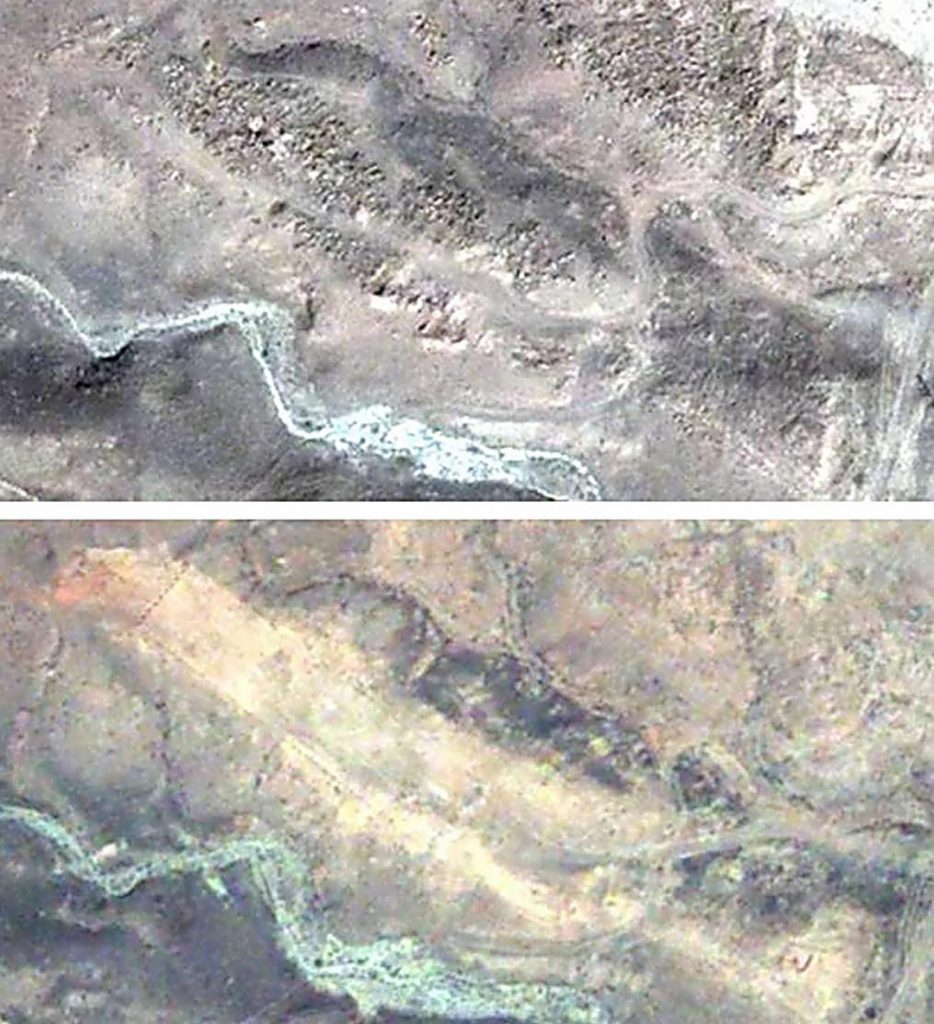
Rebuttal by Baku
“Absolutely false and slanderous information … [fabricated by] the Armenian lobby.” These were the words used by Azerbaijan’s president Ilham Aliyev — successor to and son of KGB-leader-turned-President Heydar Aliyev — to describe reports of Djulfa’s destruction in an April 2006 speech. Dismissing any criticism as “Armenian propaganda” has been commonplace in Azerbaijan since war gripped South Caucasus in the early 1990s. By the time a fragile Armenian-Azerbaijani ceasefire was signed in 1994, this conflict — the Nagorno-Karabakh war — had scarred the wider region. It caused tens of thousands of deaths on both sides and many more displaced refugees, the majority of whom were Azerbaijanis from surrounding territories that the otherwise island-shaped Nagorno-Karabakh considers its existential guarantee. “After its defeat and suffering at the hands of the Armenians,” reflected Black Garden author Thomas de Waal on Azerbaijan’s post-war rhetoric, which came to include denial of the WWI-era Armenian Genocide, “[Baku] wanted to assert Azerbaijan’s right to victimhood too.” Azerbaijan’s narrative includes Armenian aggression, ethnic cleansing, massacre in Khojaly, occupation, and anti-Azerbaijan propaganda spread by the well-connected Armenian Diaspora.
But historical revisionism in Azerbaijan challenging Armenian antiquity predates the bloody 1990s war by decades. In the mid-1950s, writes Victor Schnirelmann in the Russian-language book Memory Wars, Azerbaijani historiographers initiated an anti-Armenian agenda. Such a shift likely occurred in response to the rebellious cultural awakening in Armenia, which, as Armenian-American scholar Pietro Shakarian argues, was among the first Soviet republics to experience the “Thaw” and de-Stalinization. Each new argument of the anti-Armenian revisionism, writes Schnirelmann, “inflamed the imagination of the Azerbaijani authors.” In 1975, for instance, a Soviet Azerbaijani construction project demolished the ancient Holy Trinity church, the site of Arab invaders’ mass burning of Armenian noblemen in 705 CE. At the time of the demolition, Azerbaijani historian Ziya Bunyadov downplayed the destruction. Wrecking the church was insignificant since the “real” Holy Trinity, Bunyadov abruptly claimed, was located outside Azerbaijan. A decade later, as the Soviet Union was crumbling, Azerbaijani historians claimed that the churches and cross-stones of Nakhichevan were not the work of medieval Armenians but that of long-gone “Caucasian Albanians,” whom many Azerbaijanis consider to be ancestors, even though the extinct nation’s geographic distribution never included Nakhichevan. But, after the region’s last remaining traces of Christianity were expunged in 2005–2006, the Azerbaijani authorities abandoned discussions of “Caucasian Albanians,” and began promoting Nakhichevan as the bedrock of an “ancient and medieval Turkish-Islamic culture,” without reference to its deep Christian past.
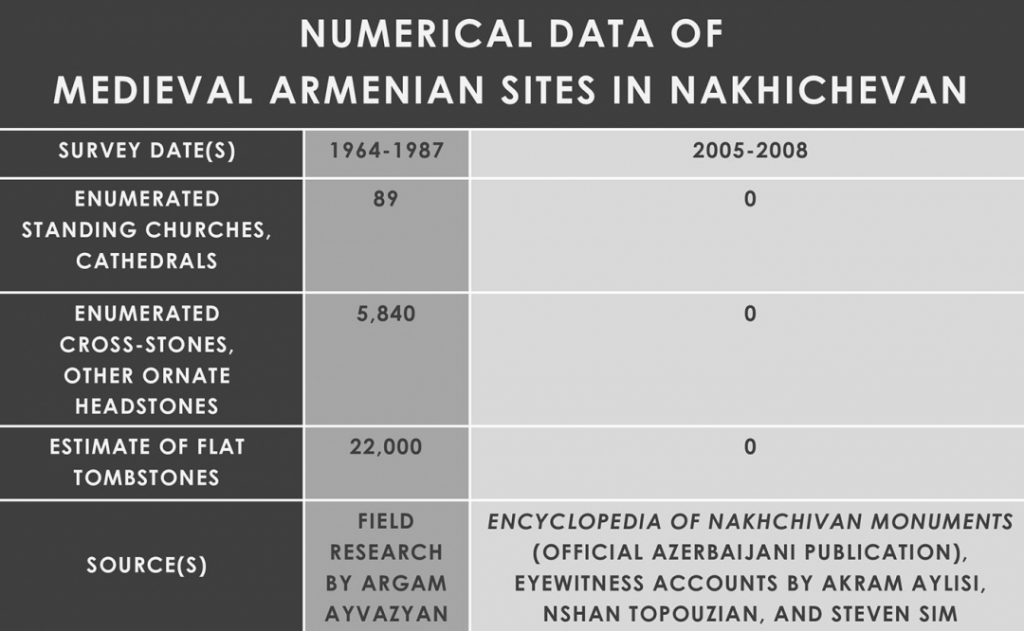
Despite fervent denial, the most gripping evidence of the erasure of Nakhichevan’s Armenian heritage comes from within the Azerbaijani government itself. On December 6, 2005, days before Djulfa’s catastrophic destruction, Nakhichevan’s local autocrat Vasif Talibov, a relative of President Aliyev, issued public decree No. 5-03/S, ordering a detailed inventory of Nakhichevan’s monuments. Three years later, the investigation was summed up in the bilingual English and Azerbaijani Encyclopedia of Nakhchivan Monuments, co-edited by Talibov himself. Missing from the 522-page “Encyclopedia” are the 89 medieval churches, 5,840 intricate khachkars, and 22,000 tombstones that Ayvazyan had meticulously documented. There is not so much as a footnote on the now-defunct Christian Armenian communities in the area — Apostolic and Catholic alike. Nevertheless, the official Azerbaijani publication’s foreword explicitly reveals “Armenians” as the reason for No. 5-03/S: “Thereafter the decision issued on 6 December 2005 … a passport was issued for each monument … Armenians demonstrating hostility against us not only have an injustice [sic] land claim from Nakhchivan, but also our historical monuments by giving biassed [sic] information to the international community. The held investigations once again prove that the land of Nakhchivan belonged to the Azerbaijan turks [sic]….”
Azerbaijan’s government has also not shied away from reinventing long-lost Armenian monuments as “ancient Azerbaijani” landmarks. In 2009, Nakhichevan’s authorities unveiled a new Islamic mausoleum as “the restored eighth-century grave monument of the Prophet Noah” in what was once an Armenian cemetery. In fact, the original mythological tomb, likely dynamited during Stalinist purges against “religious superstition,” was described by J. Theodore Bent in The Contemporary Review in 1896 as a popular Christian Armenian shrine, although other observers have reported that Muslims, too, considered the site sacred. Similarly, a construction project completed in 2016 over the ruins of the hilltop castle Ernjak was promoted as “the restored Alinja fortress — the Machu-Picchu of Azerbaijan,” with no reference to its deep Armenian past. This includes the 914 CE torture, beheading, and crucifixion of Armenia’s king Smbat the Martyr at the hands of the Abbasid caliphate’s Sajid emir Yusuf during his siege of the castle, chronicled by contemporary Catholicos Hovhannes V.
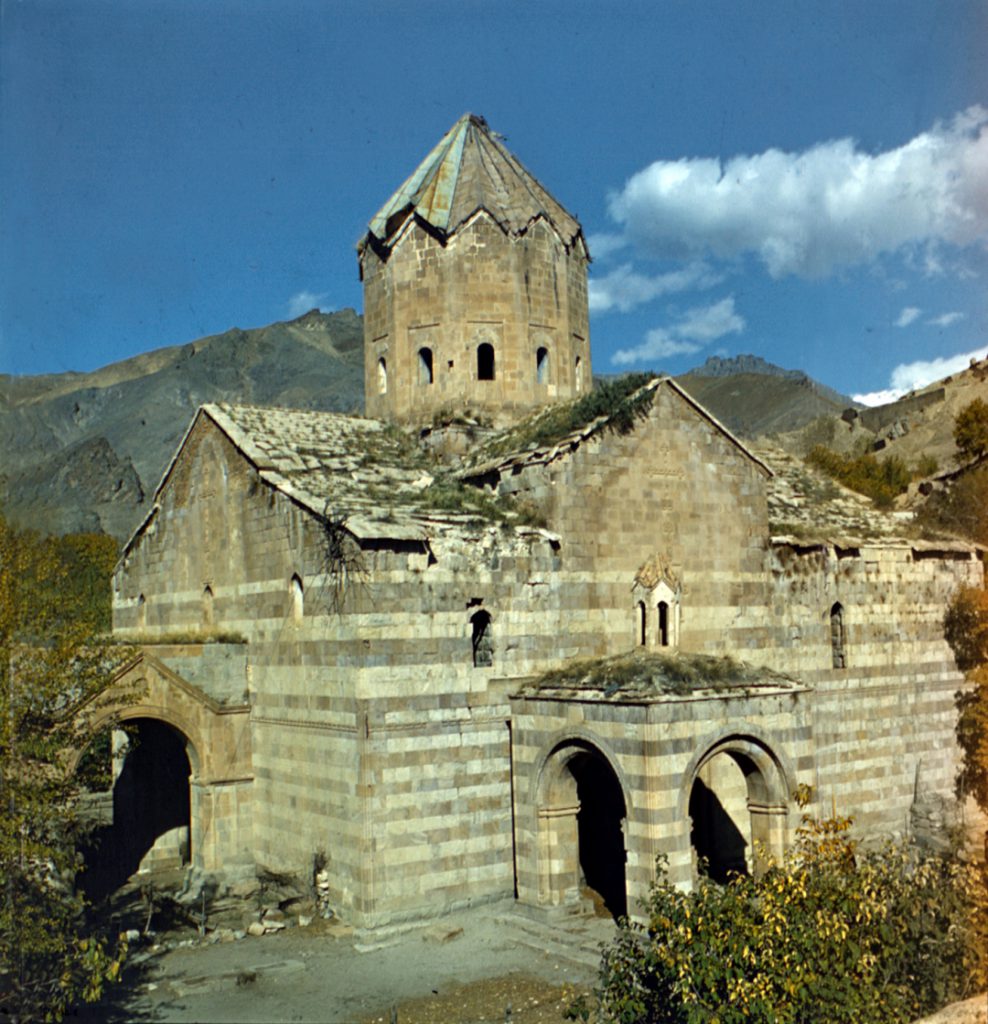
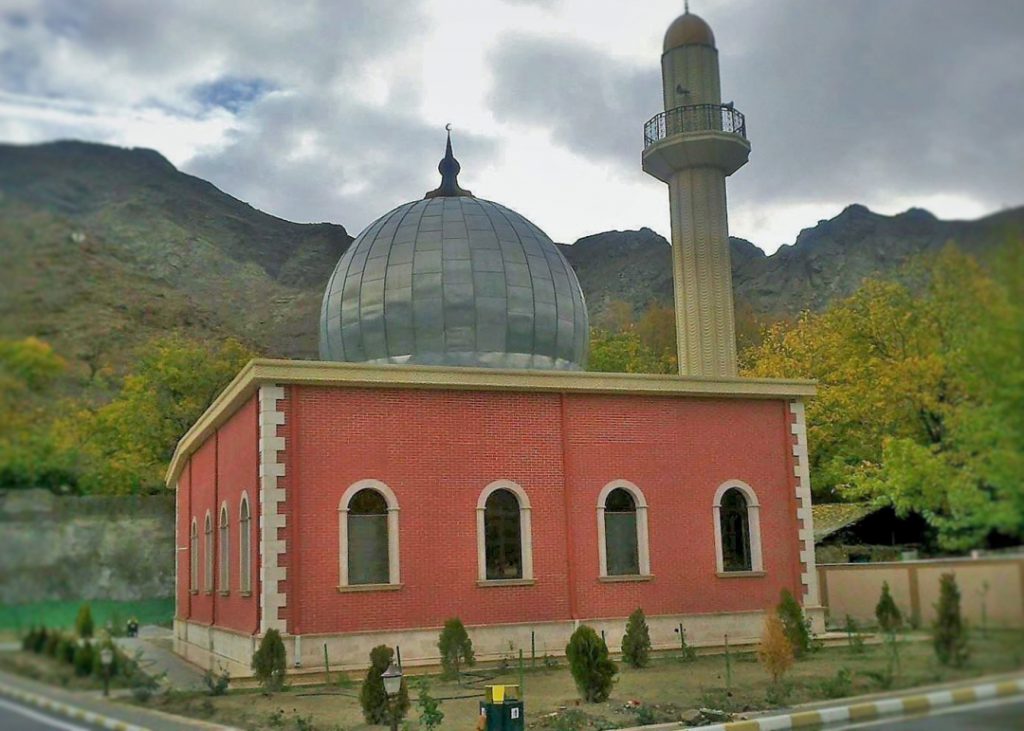
Today, Nakhichevan’s sole “surviving” Christian site is what the Azerbaijani authorities call the “Ordubad Temple,” the former St. Alexander Nevsky Russian Orthodox Church that, according to Argam Ayvazyan, was built in 1862 by the Araskhanians, a prominent Armenian clan from Agulis. In 2016, after a “renovation” that significantly altered the original structure, the Azerbaijani authorities reopened the formerly Russian church as a “temple-museum” to, in part, use its interior for displaying photos of nearby Islamic monuments, followed by Azerbaijan’s state media’s praise of the conversion as a testament to “multiculturalism and tolerance.” St. Nevsky’s Armenian masons are not acknowledged by the Azerbaijani authorities since, according to their preferred history, Armenians did not exist in Nakhichevan.
Costly Conscience
It is not just Armenians who have been affected by Azerbaijan’s government-sanctioned destruction in Nakhichevan. Affirming Nakhichevan’s Armenian roots is dangerous for Azerbaijanis as well, no matter how prominent. In 2013, President Aliyev was furious at Azerbaijan’s prolific “People’s Writer” — Akram Aylisli — for publishing a novel about Armenian suffering and antiquity. Set during the Soviet twilight, the protagonist of Stone Dreams is an Azerbaijani intellectual from Agulis (known today as Aylis), an ancient Armenian town in Nakhichevan that its worldly Armenian merchants had modernized into a “Little Paris,” well before Ottoman Turks — aided by Azerbaijani opportunists — massacred its Armenian community in 1919. The novel’s protagonist constantly grapples with memories of this place, including eight of the town’s 12 medieval churches that had survived until the 1990s, even after falling into coma while protecting a victim of anti-Armenian pogroms in Azerbaijan’s capital Baku. Riled by what he called the “deliberate distortion” of history in Stone Dreams, President Aliyev revoked Aylisli’s pension and title of “People’s Writer.” Aylisli’s writings were removed from school curricula, his books were publicly burned, and his family members were fired from their jobs. A group of international intellectuals later nominated Aylisli for the Nobel Peace Prize.
Aylisli, who has been under de facto house arrest since Stone Dreams’s release, protested Azerbaijan’s destruction of Nakhichevan’s Armenian past for many years. He reportedly witnessed the destruction of Agulis’s churches and quit his position as Member of Azerbaijan’s Parliament in protest of the late 2005 demolition of Djulfa. It is often said that Aylisli decided to write Stone Dreams upon watching a video of Djulfa’s destruction. But a newly released book reveals that Aylisli first protested the destruction in Nakhichevan nearly a decade earlier. In a recently penned essay published as part of Farewell, Aylis: A Non-Traditional Novel in Three Works (English translation by Katherine E. Young, 2018), Aylisli writes that “I always openly expressed to [Vasif Talibov] that I thought the mass destruction of Armenian monuments in Nakhchivan was a great shame of our nation.” Aylisli’s new essay also references a telegram he sent to Azerbaijan’s president in 1997, the year “when that monstrous vandalism had just begun.” Aylisili had actually published the text of this telegram in 2011 in a privately released Russian-language book with a circulation of just 50 copies. The telegram reads:
To the President of the Republic of Azerbaijan – Mr. HEYDAR ALIYEV
Honorable Mr. President
Recently it became known to me that in my native village of Aylis large-scale work is underway for the eradication of Armenian churches and cemeteries. This act of vandalism is being perpetrated through the involvement of armed forces and employment of anti-tank mines. I bring to your attention my deepest concern regarding the fact that such senseless action will be perceived by the world community as manifestation of disrespect for religious and moral values, and I express my hope that urgent measures will be undertaken on your part for ending this evil vandalism.
Respectfully,
AKRAM AYLISLI
10 June, 1997
Following Ilham Aliyev’s persecution of the famed author in light of the public release of Stone Dreams, independent Russian journalist Shura Burtin interviewed Akram Aylisli in 2013 in Baku. Awed by Aylisli’s nostalgia for his birthplace, the Russian journalist traveled to Nakhichevan to see the area with his own eyes. Recounting his 2013 visit to Agulis, Burtin recently told Hyperallergic that he didn’t see “a trace of the area’s glorious past.” Burtin did not mince words to describe what he saw (or rather, didn’t see): “not even ISIS could commit such an epic crime against humanity.”
Different Diagnoses
Outside observers have typically interpreted the Aliyev regime’s erasure of Nakhichevan’s Armenian Christian heritage solely as a vengeful legacy of the bloody Nagorno-Karabakh war, but Armenian scholars and Azerbaijani dissidents have several additional theories of their own.
Armenian researcher Samvel Karapetyan, whose diligent documentation of remote medieval Armenian monuments in Nagorno-Karabakh has been dubbed “constructive ultra-nationalism,” sees Azerbaijan’s destruction of Armenian monuments as an effort to neutralize Armenian “historical rights” or antiquity-derived political legitimacy in the region. Other Armenian scholars perceive Azerbaijan’s anti-Armenian destruction as part of a larger agenda of realizing a vision of pan-Turkism: an ethnically homogenous Turkic polity comprising Turkey, Azerbaijan, and their ethnolinguistic brethren across Eurasia. In the words of the late Armenian historian Edward Danielyan, “[Azerbaijan’s] monstrous crimes [against medieval Armenian monuments] are not a clash of civilizations or cultures, but a continuation of the [1915–23] genocide stemming from Pan-Turkism’s anti-Armenian policies.”
Perceiving parallels between the obliteration in Nakhichevan and the destruction of material heritage during the Armenian Genocide in Turkey is not without merit. The pre-WWI count of active Ottoman Armenian churches and monasteries, according to the Armenian Patriarchate of Constantinople, was 2,538 and 451, respectively; nearly all have since been destroyed or repurposed. As French journalists Laure Marchand and Guillaume Perrier explain in Turkey and the Armenian Ghost, “Since the Armenians’ religious heritage was the strongest expression of their ancestral roots, it became a prime target for their oppressors.” In absolute numbers, Turkey’s wipeout of Armenian cultural heritage dwarfs Azerbaijan’s recent vandalism in Nakhichevan. Nevertheless, many Armenian ruins — and a few renovated churches — do survive today across historical Armenia’s western regions in what is today Eastern Turkey. In contrast, Azerbaijan has left no Armenian stone unturned in Nakhichevan.
Unlike Armenian scholars, Azerbaijani dissidents often see the destruction of Nakhichevan’s Armenian heritage as part of a domestic crackdown on all forms of opposition to Azerbaijan’s ruling elite. This repression seemingly intensified after the May 2005 inauguration of the lucrative Baku-Tbilisi-Ceyhan oil pipeline. Vasif Talibov authorized decree No. 5-03/S, the effective order for erasing the last remnants of Armenian Nakhichevan, just months after the Europe-bound pipeline’s opening. But Talibov’s entourage did not just attack khachkars. They also shutdown most of the region’s numerous privately-owned teahouses, the traditional center of Azerbaijani social life, where discussing politics was as commonplace as indulging in hot tea. Simultaneously, Talibov has been unveiling mosques and statues honoring the ruling dynasty’s patriarch Heydar Aliyev. According to Netherlands-based independent Azerbaijani historian and prominent human rights defender Arif Yunus, who was previously jailed in Azerbaijan on what Amnesty International considers trumped-up charges of “treason,” the Azerbaijani president’s anti-Armenian posture is inflated jingoism aimed at cementing his regime. “After replacing his father in 2003 as president,” Yunus told us, “Ilham Aliyev upgraded Armenophobia to the levels of fascist Germany’s anti-Semitism.” The final purge of Nakhichevan’s medieval Armenian monuments, according to Yunus, was conceived by Ilham Aliyev to boost his nationalist credentials, while Vasif Talibov happily complied to remain in charge.
While some Azerbaijanis have embraced their government’s vandalism as either righteous revenge or a national security measure against potential Armenian territorial claims, other Azerbaijanis — in addition to the humanist author Akram Aylisli — have mourned the destruction. According to an Azerbaijani historian, who requested anonymity, many among modern Nakhichevan’s almost half-million population (virtually all of whom are Muslim), are devastated by the recent disappearance of the area’s Christian heritage. This includes teachers who took students on field trips to those sites. However, “they prefer silent rage over jail time.” Aylisli’s 2018 non-fiction essay in Farewell, Aylis even claims that a mosque built five years ago on the site of one of the destroyed churches has been boycotted by locals because “everyone in Aylis knows that prayers offered in a mosque built in the place of a church don’t reach the ears of Allah.”
Multiculturalists, Not Vandals
President Aliyev has harsh critics among Azerbaijani intellectuals and the global human rights community, but he also has passionate supporters abroad. In fact, the Aliyev regime’s controversy-riddled diplomacy promotes Azerbaijan as a “land of tolerance.” In 2012, the European Stability Initiative described Azerbaijan’s generous spending on lobbying and attempts to woo foreign allies as “caviar diplomacy.” This petrodollar-funded campaign has entailed various donations, including cultural preservation grants of undisclosed sums to the Vatican. Baku’s ability to court friendships has produced many notable results, including a 2015 Time Magazine op-ed describing Azerbaijan as “an oasis of tolerance,” commendations of Azerbaijan’s “exemplary interfaith harmony” in several US state legislatures, and medals bestowed upon Azerbaijan’s Vice President — President Aliyev’s wife — by the leaders of France, the Russian Orthodox Church, and even UNESCO, the international organization charged with protecting world heritage. The latter’s World Heritage Committee is scheduled to meetin June 2019 in Baku, where President Aliyev’s token preservation of a repurposed 19th-century Armenian church (the age of which “proves” that Armenian history inside Azerbaijan spans just a couple centuries) is a must-see “tolerance” attraction.
UNESCO’s commendations of Azerbaijan have been particularly puzzling. In 2013, following Washington’s defunding of UNESCO, Azerbaijan donated $5 million to the cash-strapped organization. Praise for Azerbaijan’s “multiculturalism” and “tolerance” soon ensued. Even before Azerbaijan’s donations, UNESCO’s leaders had largely ignored the destruction in Nakhichevan, despite documentation submitted by the Parliamentary Group Switzerland-Armenia and Research on Armenian Architecture. Moreover, following his 2009 retirement, UNESCO director-general Kōichirō Matsuura joined Azerbaijan’s state-managed “Baku International Multiculturalism Centre” as a trustee, while his successor Irina Bokova frequented Baku for President Aliyev’s “World Forum on Intercultural Dialogue.” Allegations of foul play lack hard evidence, however, perhaps except for The Guardian’s September 4, 2017 report “UK at centre of secret $3bn Azerbaijani money laundering and lobbying scheme.” This investigative article by Luke Harding, Caelainn Barr, and Dina Nagapetyants cited questionable payments to Bokova’s husband. Ethical or not, the UNESCO-Azerbaijan rapport has undoubtedly contributed to international silence over the destruction of Nakhichevan’s Armenian past. But Baku’s UNESCO charm offensive, argues Aliyev critic Arif Yunus, also promotes domestic obedience: “Nothing projects the Aliyev dictatorship’s power to Azerbaijani dissidents like committing cultural genocide in Nakhichevan then showering in international praises of tolerance.”
Pursuits of Justice
Unable to hold Azerbaijan accountable for the purge of Nakhichevan’s Armenian cultural heritage, Armenians and their allies have rethought what forms justice might take. In 2010, Armenia convinced a multi-state UNESCO committee to declare “the symbolism and craftsmanship of khachkars” part of UN-designated Intangible Cultural Heritage — a posthumous yet implicit tribute to Djulfa.
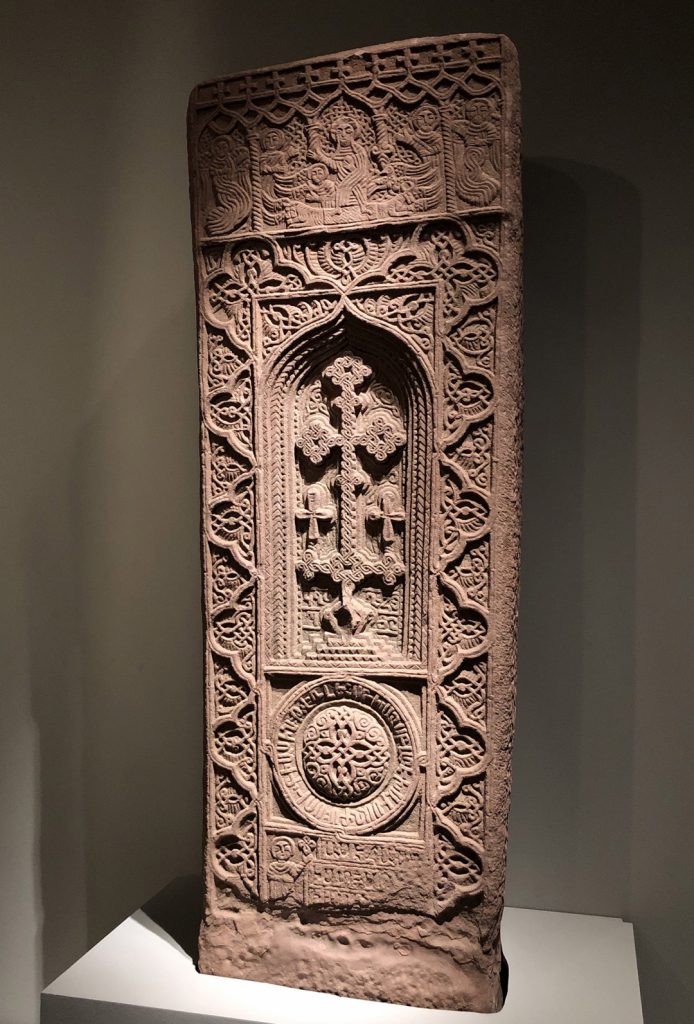
Several replica Djulfa khachkars have been erected across the world, including at the Council of Europe headquarters in Strasbourg, France and the Colorado State Capitol in Denver, US. The Australian Catholic University’s former Julfa Cemetery Digital Repatriation Project, the brainchild of Judith Crispin, aimed to virtually recreate Djulfa with 3D imaging technologies. The Project was created in part “to demonstrate to those who destroy world heritage that their efforts are in vain,” states digital humanities specialist Harold Short. Yet remote restoration of Nakhichevan’s lost Armenian monuments or alternative measures of accountability fall short of unanimous approval. “The ultimate hope for in-situ reconstruction is reconciliation,” explains Brian Daniels, the University of Pennsylvania’s Cultural Heritage Center director. Daniels, who has testified before the US Congress about issues of cultural destruction, notes that expert conservation efforts must begin with at least some material remains, however small. But even meeting this requirement would be “an extraordinary difficulty in Azerbaijan.”
Today, the scholar Argam Ayvazyan — like all those of Armenian ethnicity and background — is banned by Azerbaijan’s government from visiting his native Nakhichevan. Lamenting the loss of the monuments he so lovingly documented for decades, he decries the world’s silence. “Oil-rich Azerbaijan’s annihilation of Nakhichevan’s Armenian past make it worse than ISIS, yet UNESCO and most Westerners have looked away.” ISIS-demolished sites like Palmyra can be renovated, Ayvazyan argues, but “all that remain of Nakhichevan’s Armenian churches and cross-stones that survived earthquakes, caliphs, Tamerlane, and Stalin are my photographs.”
